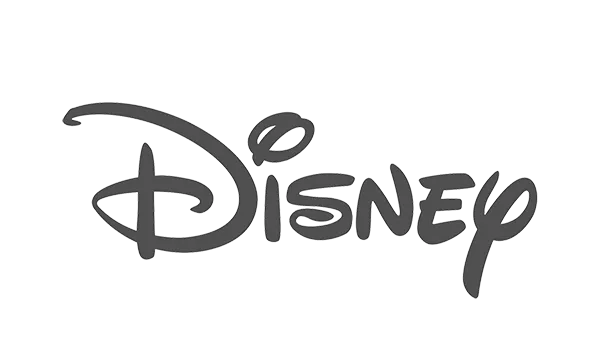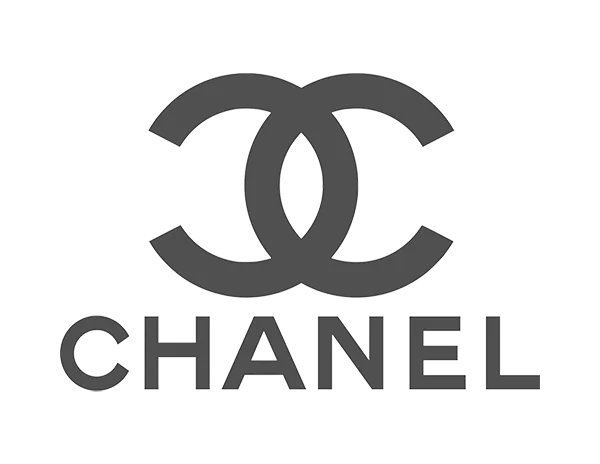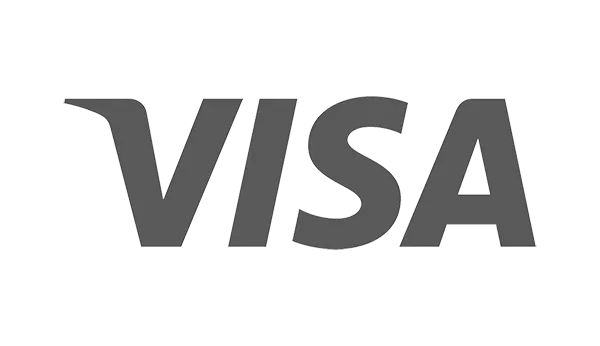Have you ever heard of the term "diversity or inclusive hiring"? Well, if you're an HR professional, then chances are you've already dealt with this type of recruitment strategy before and are looking for ways to apply them to your current practices. But what makes hiring for diversity one of the most powerful recruiting techniques out there?

Hiring for diversity plays a massive role for both HR professionals and the company. According to a survey by The Manifest, about 70% of job applicants consider this strategy crucial when applying. It's also effective in creating a diverse workforce with different perspectives, ideas, and backgrounds. Together, employees can all work to develop valuable innovations that lead to any company's growth.
In this guide, we'll focus on the must-knows of this topic. We'll discuss the foundations of diversity hiring, its significance, and the hiring strategies you should have in place. We'll also look at some mistakes you may be unconsciously making and several examples of top brands that have incorporated this recruitment process in their workplace.
What Is Diversity and Inclusive Hiring?
Diversity entails having different people with varying backgrounds, cultures, and beliefs gathered together in one place to share their ideas and knowledge. They all have various ethnicities, sexual orientations, religions, and more. Of course, they also have different skills, experiences, socioeconomic levels, and personality types.

Meanwhile, putting diversity into the business setting gives us inclusive hiring, otherwise known as diversity hiring. Its primary purpose is to remove any form of hiring bias in a job applicant's journey. It goes beyond who they are and considers what they can offer the company. It also aims to evaluate whether they'd be an excellent fit for the job they're seeking.
In other words, this hiring strategy gives equal opportunities to all job seekers regardless of their race, sexual orientation, values, and more. It also encompasses creating an inclusive and welcoming work atmosphere after the recruitment process.
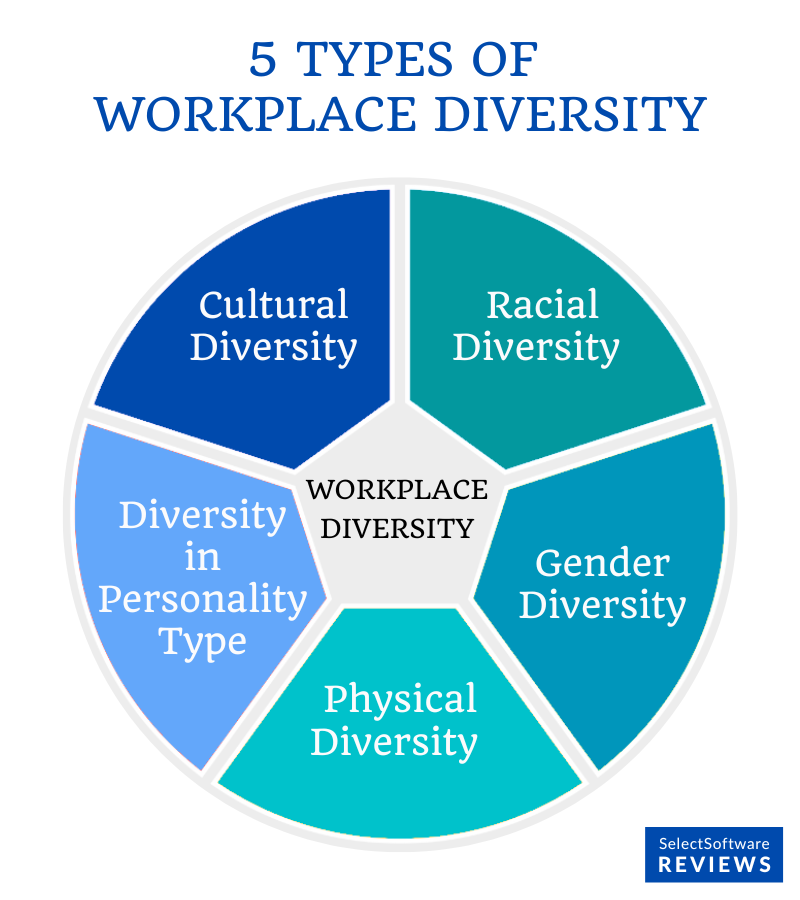
Types of Diversity in the Workplace
There are five types of diversity you must evaluate — culture, race, gender, physical disabilities, and interests. Let's take a look at each category below.
1. Cultural Diversity
The first type of diversity in a workplace is cultural diversity. That would entail understanding and appreciating the backgrounds and upbringings of each applicant.

This type of diversity also reflects your applicant pool's beliefs, heritage, world perspectives, behaviors, and languages. Hence, integrating this aspect into your recruitment strategies allows you to bridge cultural gaps and learn from each other.
When you limit this type of diversity, you restrict them from voicing their true thoughts and feelings. It may also lead to confusion and miscommunication on both ends.
2. Racial Diversity
The next type of diversity in the workplace is racial diversity. Although it's sometimes interchanged with cultural diversity, these two terms have different definitions.
Instead, racial diversity focuses more on an applicant's biological aspect. In particular, it revolves around their color, nationality, ethnicity, or descent such as African-American and Asian talents.
Incorporating this type of diversity into your hiring strategies will attract talents rather than scaring them off. It also prevents unconscious discrimination in which you assume something about your applicants that may be false.
3. Gender Diversity
Another type of diversity in the workplace is gender diversity. The difference between women and men in the global workforce is still significant. In 2020, only 46.9% of all women participated in the global workforce. Meanwhile, 3 in 4 men are active in the workforce, accounting for 74% of the male population.
A bit more staggering is the difference between women and men in leadership and executive positions. Women make only 18% of executives worldwide, and 5% of CEOs.

4. Physical Disabilities
You can also consider physical disabilities as another type of diversity when creating a robust hiring strategy that is inclusive. According to the Center for Disease Control and Prevention, 26% of the people in the US have disabilities.

Considering the size of a population, it arguably represents a pool of untapped talent. Many times, people with disabilities find it difficult to look for a job that isn’t empathetic to their situation if, for instance, interviews are only face-to-face, the workplace isn’t fully accessible, etc.
Hence, taking action to make your hiring process more inclusive can give you an edge over your competition and let you find a valuable teammate where others may neglect to look. Also, depending on your industry, people with disabilities can obviously provide unique insights into how to serve customers in this demographic.
5. Diversity in Personality Types
Big Five, Type A/B, Four Temperaments, Myers-Briggs… regardless of the framework you choose, understanding personality differences can also be a valuable tool for creating a workplace that finds strength in its diversity.
Being mindful of personality means hiring people knowing that they have a strong chance of being a good match for a particular job. In turn, this sets you up to improve retention and engagement. Overall, this helps explain why personality assessments have been a common practice in HR for years.
Overall, comprehending and incorporating the five types of diversity in the workplace can bring significant advantages. It helps hiring managers develop a connected, engaged, and more inclusive workforce. In the future, this diversity would drive growth and success for the company.
However, the five types of diversity in the workplace aren't technically limited to just five. More diversity types exist such as sexual orientation, religion, age, and a lot more. But in general, the types discussed here are the most common and crucial factors that the human resources department must consider.
Related to Diversity:
Latest Statistics on Diversity in the Workplace and Why it's Important
Why Is Diversity Hiring Important?
In a world where the workforce is fast-growing, hiring for diversity isn't just for a noble cause. It also brings excellent advantages to companies like enhanced job performance, innovation, and productivity. Let's take a look at these advantages below.
1. Wider Perspectives and Ideas
The most obvious pro of having diverse job applicants is their varying world views and perspectives. Their experiences, cultural differences, and upbringing can offer different strengths to their future jobs. They can have various approaches to solving problems and insights on customers with a similar background.

For instance, consumers with physical disabilities correspond to an average annual disposable income of $1.2 trillion. As we’ve mentioned before, by hiring workers with shared experiences, any company can maximize this potential revenue through insights on how their services and products can fit the needs of this target area.
A diverse talent pool also allows the company to step out of its echo chamber. It will consider all possible information and solutions and integrate them to enhance creativity, decision-making, and overall results.
2. Enhanced Creativity
Another advantage that diverse hiring brings to your company is enhanced creativity. Some HR professionals may think that having a homogenous workforce is beneficial to the entire team. Sadly, that's not always true.
Having a homogenous workforce entails having team members with the same perspectives, cultures, skills, and the like. Because of this, you're restricting the potential creativity of your company's workforce. Instead, prospects with diverse backgrounds can bring multiple and fresher solutions to the table.
3. Increased Productivity
Enhanced creativity also corresponds to increased productivity in your company's workforce. More diverse people may participate in the brainstorming process and create more solutions to problems. For example, a study conducted by Deloitte showed that employees who consider their organization to be supportive of diversity and inclusion tend to report better business performance overall.
4. Better Brand Perception

Diversity hiring will make the company you're working for look good on top of its advantages. With this distinguished reputation, more potential hires are likely to consider applying. That widens your prospects and creates more opportunities to select highly qualified talents for the company.
5. Better and Larger Candidate Pool
Going back to the survey by The Manifest, about 70% of job applicants consider diversity hiring crucial when applying. That means a safer space where your talents can freely express themselves. This allows you to get to know them more and whether they'd make a good match for the team.
6. It Might Improve Business Performance
A Josh Bersin study showed that companies with diversity and inclusion efforts generated 2.3x more cash flow from every employee. This value then corresponds to at least 1.4x more revenue overall. They found that, in general, more diverse workplaces tend to perform better, stating that “the talent practices which predict the highest performing companies are all focused on building an Inclusive Talent System.”

This is not to say that inclusivity alone will increase revenue for your company. Remember that correlation does not imply causation. Rather, the combination of all the benefits we’ve mentioned here that is likely part of the cause for the strong performance among these sorts of businesses, but not the only one.

Diversity Hiring Laws That You Should Know
Hiring for diversity isn't an easy job. You'll need to consider various sets of laws and regulations both on the federal and state level. These of course will vary depending on the country you’re in, but here are some examples of the laws that you’d need to consider when hiring in the US:
1. Civil Rights Act of 1866
The Civil Rights Act of 1866 is among the earliest acts that prohibit discrimination during the recruitment process. In particular, it prevents HR professionals from basing their recruitment decisions on an applicant's race.
2. Title VII of the Civil Rights Act of 1964
Similarly, Title VII of the Civil Rights Act of 1964 further supplements the previous Civil Rights Act of 1866 and includes more marginalized sectors. It prohibits discrimination in employment not only based on race but also on color, religion, nationality, and gender.

3. Age Discrimination in Employment Act of 1967
Another important diversity hiring law is the Age Discrimination in Employment Act of 1967. It aims to encourage those over 40 years of age to look for jobs and apply. It also prevents unlawful reduction in wages and allows job advertisements to this particular age group.
4. Americans with Disabilities Act of 1990
The Americans with Disabilities Act of 1990 allows people with disabilities to apply for any job as long as they can perform its essential functions. Such disabilities include physical and mental impairment and strengthen their eligibility for equal wages, promotion opportunities, and more.
5. Genetic Information Non-Discrimination Act of 2008
A relatively new law in the US is the Genetic Information Non-Discrimination Act of 2008. It prohibits discrimination against the genetic makeup and family history of an individual.

6. State-Specific Laws
There are also state-specific laws across the 50 states in the US. These laws strengthen the provision of the federal laws and are dependent on the community's particular needs. For instance, the Elliot-Larsen Civil Rights Act of 1976 prevents discrimination based on the weight and height of an applicant in Michigan.
Diversity Hiring Mistakes and How to Avoid Them
Diversity hiring isn't just about sourcing a diverse applicant pool. It also involves actively reaching out to candidates until they get hired. Let's look at the common diversity hiring mistakes you may be unconsciously making.
1. Traditional Interview Schedules
Traditional interview schedules occur during business hours. However, candidates from minority groups may not always have the time to attend to these schedules. The best approach to this limitation is to extend your interview schedules beyond the traditional business hours.
2. Conventional Video Interviews

Video interviews shouldn't also be your sole basis for hiring an applicant. According to a survey by Pew Research Center, 33% of Hispanic respondents didn't have a laptop, while another 35% didn't have access to the internet. That's why conducting phone interviews on top of the traditional video interview process could be helpful.
3. Unconsciously Biased Job Postings
There may be instances where you unconsciously put bias into your job description posts. To avoid this, try to use gender-neutral language when creating openings. It’s also good to review the entire messaging of the post to evaluate whether it's discriminatory to potential talents.
4. Discriminatory School Sourcing
A typical hiring mistake is putting all your efforts on recruiting applicants from elite or top schools. But this approach limits your applicant pool by a significant margin. That means you're cutting off opportunities for diverse teams with varying perspectives and ideas.
5. Unfair Technical Assessments
Basing an applicant's hiring potential on technical assessments alone is unfair. It lessens the chances for underprivileged and underrepresented groups to have high scores than those who have had training. Instead, use these tests to determine an applicant's weaknesses, strengths, and areas for improvement.

Best Diversity Recruiting Strategies to Follow in 2022
The best hiring practices for diversity focus from the start of the recruitment process until the end. That entails sourcing from a diverse applicant pool until shortlisting qualified talents into the job position regardless of their race, color, and more. Here are 12 diversity hiring approaches you can follow this 2022.
1. Monitor Job Descriptions
The first strategy relies on how well you source candidates. To do that, you'll need to put effort into creating job advertisements that promote inclusion. You can monitor their statistics in the past and see how well they reached a specific demographic.
Besides that, ensure that your job descriptions and language give a positive and welcoming message. They have to speak to a broad range of candidates to have an inclusive appeal to diverse sets of people. You can also explain why they'll make a good fit for the company.

2. Expand Your Sources
Another effective hiring strategy is to expand where you source your candidates. To get a diverse workforce, you'd need to look out for qualified candidates from various places. For instance, you'll have a more mixed pool when you expand your visits to more schools offering job fairs.
Otherwise, getting your prospects from the same source will create a homogenous workforce that lacks diversity and has similar perspectives and ideas. But expanding your recruitment channels on social media such as LinkedIn to also reach the minority groups could go a long way.
3. Get Referrals from Workforce
Sourcing for more potential candidates becomes easier when tapping the company's workforce. This strategy makes sense because everyone has varying networks of people they know. Typically, referred applicants will also have a similar background as the employee referring them.
With an effective diverse candidate referral program, you're opening more opportunities for people of different backgrounds, gender, religion, and more. It also makes the company notable for valuing diversity, equality, and inclusivity (DEI).
One useful tip when getting referrals is to reach out to a specific demographic within the workplace. If you're looking for more candidates of color, you can ask the current employees to share the job openings with their network. This method is also effective in boosting engagement for those already within the company.
4. Have Paid Internships

Unpaid internships should be a thing of the past because it promotes inequality. It makes students work tirelessly for a position without getting paid. But by having paid programs, you'll have an equal opportunity to connect with prospects and for them to get more experience in return.
To effectively carry out this strategy, you'll need to scout schools and community groups with underrepresented people. Encourage them to apply for an internship and tell them how they can help the company grow.
5. Review Resumes/CVs Blindly
One of the major culprits for biases in hiring is screening candidates based on the personal information they've placed on their resumes or CVs. Although it's not apparent, you can have an unconscious bias when going through their submissions.
For instance, you’ll know their gender, religion, and some sort of background. So the best way to combat this limitation is to review their resumes and CVs blindly. If possible, refrain from looking at their photos, names, age, address, religion, and gender.
6. Use AI Recruiting Software for Resumes
If you want to remove more biases during resume screening, another possible way is to use AI recruiting software. By leveraging artificial intelligence during this process, you can filter resumes based on specific experiences, skills, and more. The software will analyze these papers depending on the parameters you have.
7. Look At Predictive Assessments
According to a study by Schmidt, the education and experience of a person won't give you a complete picture of their abilities. Instead, it more commonly shows the socioeconomic statuses of people.
For instance, Mark Zuckerberg has become a prominent figure in the tech industry for creating a powerful website despite dropping out of college. Similarly, more minority groups face bias in our society. They may not have the same opportunities and socioeconomic capabilities to improve on their educational attainment and skills.
That's why having predictive assessments that simulate how they would handle particular circumstances for the job would help you evaluate their expected job performance. You can give them a realistic scenario or task they would be doing for the company. Work samples also become handy alongside their resumes and CVs.
8. Conduct Blind Interviews
This next strategy uses the same principle as blindly reviewing resumes and CVs. Instead of video interviews, you can utilize text-based answers on recruitment platforms. In this way, you avoid looking into any personal information on a candidate. Anonymous answers also show the personality and way of thinking of your prospects.
9. Have Multiple People on the Hiring Team
Besides leveraging artificial intelligence, tapping multiple people to be part of the hiring team can go a long way. If only one individual reviews the resume and interviews a candidate, there's likely to be bias throughout the process. But having multiple reviewers remove those.

Multiple people on the recruitment team make it possible to have more accurate feedback on a candidate. By having a standardized scoring system, various individuals can cancel out their individual biases. A scale on reviewing work samples can also be of great help.
10. Use ATS Software to Shortlist Applicants
Apart from AI that screens resumes and CVs, you can also use ATS software to shortlist applicants who have passed the screening process. This tool removes personal opinions and biases and gives you all the relevant information suited for the job description. It also gives you a diverse candidate pool with a lot to offer to the table.
11. Diversify Your Talent Pipelines
Once you've shortlisted applicants, make sure to take the principle of the "two in the pool" effect by heart. This concept states that candidates are more likely to accept job offers when multiple people belonging to the minority group are part of the list.
Otherwise, it'll be more challenging to get new hires if they're alone. This strategy ensures you'll get diverse candidates. It also gives applicants equal hiring opportunities.
12. Have an Inclusive Brand Reputation
You'll likely attract more applicants if your company has an inclusive brand reputation. If it's known for having diverse teams regardless of age, gender, sexual orientation, and more, that can show applicants that you value and appreciate each individual.
13. Enforce DEI Company Policies
In connection to having an inclusive brand reputation, you'll need to push for DEI policies within the company. It isn't enough to implement such strategies only during the hiring process. That makes everything about the company surface-level and may reduce employee retention rates.

Instead, the company must live out those values and appreciation in every aspect. For instance, having holidays for specific celebrations allows diverse people to honor their culture and tradition. It may seem like a small step, but it has a significant impact on them.
Additionally, ensuring that communication is alive within the workplace can benefit the company. If applicants know more about such work practices in place, they're more likely to accept the job offer. Even better, they'll stay longer and encourage more people to apply.
How to Measure Diversity in Your Hiring Efforts
Knowing the best and most effective recruiting strategies isn't enough until you generate organic results. Below are some metrics you should measure if you want workplace diversity and a nice reputation for the company you're working for.
1. Look at Outreach Activity

An example of diversity hiring goals is to reach out to underrepresented prospects. To measure this metric, you'll need to consider their response and interest rates. You can modify the messaging of your openings based on these data.
2. Check Funnel Activity
On top of measuring your reach, it's also vital to consider their conversion rates. That means looking into how many of your respondents get hired. In this way, you can assess the various stages in your recruitment process from start to finish. It also tells you which recruiting software and channels are effective.
3. Compare Talent Pool Demographics
Another possible way to measure how effective your strategies are is to evaluate the demographics of the current workforce based on their race, age, gender, and whether they belong to the LGBTQIA+ community. From such data, try to compare the numbers with the current potential candidates to see if they balance out.
4. Have Overall Experience Surveys
Measuring your diversity metrics doesn't stop at your interest and conversion rates. You can have a mix of qualitative and quantitative surveys to give you an idea of the overall experience of your new hires and employees. It can also tell you their retention rates and whether they'll refer the company to others.
Software That Help in the Hiring Process
Incorporating artificial intelligence into your recruiting strategies makes your life easier. It allows you to streamline the application process, remove possible biases, and give an overall better experience to the applicant pool. Below are some of the best diversity recruiting tools you can use during the recruitment process.

1. VerifiedFirst
With VerifiedFirst, you no longer need to call employment background check companies to screen your applicant pool. Instead, this software has various background screening processes that give accurate results quickly. You also won't need to log into another tool because you can easily integrate it into your ATS software using an available Google Chrome extension.
2. ChartHop
Another software that's useful in the hiring process is ChartHop. This HR software ensures that your current recruitment strategies and practices meet diversity, equality, and inclusion. It has a built-in reporting system, which you can use to analyze various trends over time.
In particular, you can create reports and track the success of your initiatives in creating diverse and inclusive teams. You can also share these results and trends without disclosing sensitive individual data to the entire workforce. Even better, it's perfect for any company of any size.
3. Rippling
Once you've screened out and shortlisted candidates, the final stage is their onboarding. To help you during this phase, Rippling has tons of features you can try out. This onboarding software is your one-stop HR tool.
Rippling makes the entire onboarding process seamless and quick. All you need is to enter the new hire's basic information then it will automatically create an onboarding program. It's also intuitive and has an eye-catching design.
Examples of Companies with a Great Diversity Strategy
Several distinguished companies have incorporated the best diversity strategies into their talent acquisition policies. They've paved the way for a more inclusive, productive, and thrilling future for everyone. Here are some of the top brands you can take inspiration from.
1. Google
Google is one of the top names in the tech industry that has diversity hiring strategies focused on ensuring the growth in diversity of the company. It provides unlimited opportunities to minority groups by promoting racial equality in its hiring process globally.
In Brazil, English is no longer a required qualification for interns. This move drove in more potential applicants to the company. It reduced room for inequality and allowed non-English speakers to have an opportunity to apply to Google.
Besides this, Google has also given nearly 200 scholarships for female candidates taking up tech. That’s an impressive strategy for balancing out the tech industry which is mostly dominated by men.
On top of these approaches, Google has also established an IT Residency Program across the Asia-Pacific, EMEA, and the US. By expanding to wider regions and countries, they can attract more diverse candidates with varying backgrounds and perspectives.
2. Microsoft
Microsoft is one of the leading names in the tech industry that has impressive hiring strategies for applicants with physical disabilities. During an applicant’s interview, they can request various services from the company to make their experience more inclusive and better.
For instance, people with hearing problems may request captioning services or sign language services. Visually impaired applicants, on the other hand, may ask for the availability of a braille keyboard during their interviews.

To top it off, Microsoft is also known for its inclusive autism hiring program. It opens new opportunities to applicants with autism who usually experience discrimination in our society.
They also allow extended interview times for applicants who have trouble scheduling interview slots during the typical business hours.
3. Pinterest
Pinterest has extended its school recruiting scope and offers internships for minority groups. For instance, they have inclusive training and mentoring programs for Black students whether they're graduating or still a freshman.
This strategy widens opportunities for people that belong to these groups, especially since they allow internships for non-graduating students. They also open doors for freshmen to appreciate their courses more as early as possible.
Apart from these strategies, Pinterest requires at least one person from these minority groups to be part of their new hires. This way, they can ensure that their teams are diverse and offer varying perspectives when creating solutions for their clients.
4. Nike
Nike is among the top sports brands worldwide. It has over 50% of employees of color and ensures a gender-balanced workplace. Some of their diversity strategies include blindly reviewing resumes/CVs and having inclusive job descriptions for their openings.
5. Schneider Electric
Schneider Electric is one of the leading specialists in energy management and automation globally. It has committed to strengthening gender diversity by hiring more women each year. It also has programs to further increase diversity among genders that create more impactful solutions.
Frequently Asked Questions (FAQs):
What are Hiring Quotas?
An employment quota is a system in which a percentage of minority groups get hired into the company. It aims to increase their representation and remove discriminatory hiring practices. Unfortunately, this practice isn't always the best.
The main reason is that it's mostly a surface-level approach in improving the representation in your applicant pool. Instead, focus on encouraging minority groups to apply for a job opening and increasing your talent options.

Is Diversity Hiring Legal?
Hiring practices for diversity are legal as long as companies properly conduct their recruitment strategies. That means reducing any form of unconscious bias from your hiring approaches as much as possible.
Following the methods mentioned in this post could give you insights on how to conduct them correctly. Additionally, there are federal and state-level laws in place to protect the rights of the minority. Violating these rules and regulations may make you pay high fees for legal actions.
Do Employers Get a Tax Break for Diversity Hiring?
Employers can earn Work Opportunity Tax Credits (WOTC) when they hire individuals from underrepresented groups, including veterans, people with disabilities, and more. They can get as much as $9,600 for every new hire, which the Internal Revenue Service (IRS) reduces on their due amount during tax time.
Conclusion
The bottom line in diversity hiring is to actively make opportunities to expand to a broader range of people. Make sure to reach out to them instead of waiting for them to find you. Otherwise, you'll be missing the opportunity to screen, shortlist, and hire a diverse workforce.

However, hiring for diversity goes beyond enforcing such practices during this process. Companies must engrain DEI into their company culture since the various recruitment strategies above improve innovation within the workplace.
More on Diversity:
While Companies Make Strides Towards Diverse Workplaces, Political Diversity Struggles in Tech
Using Diversity, Equity, and Inclusion Software to Support Initiatives
How HR Software Helps with Your Diversity, Equity and Inclusion Strategy





